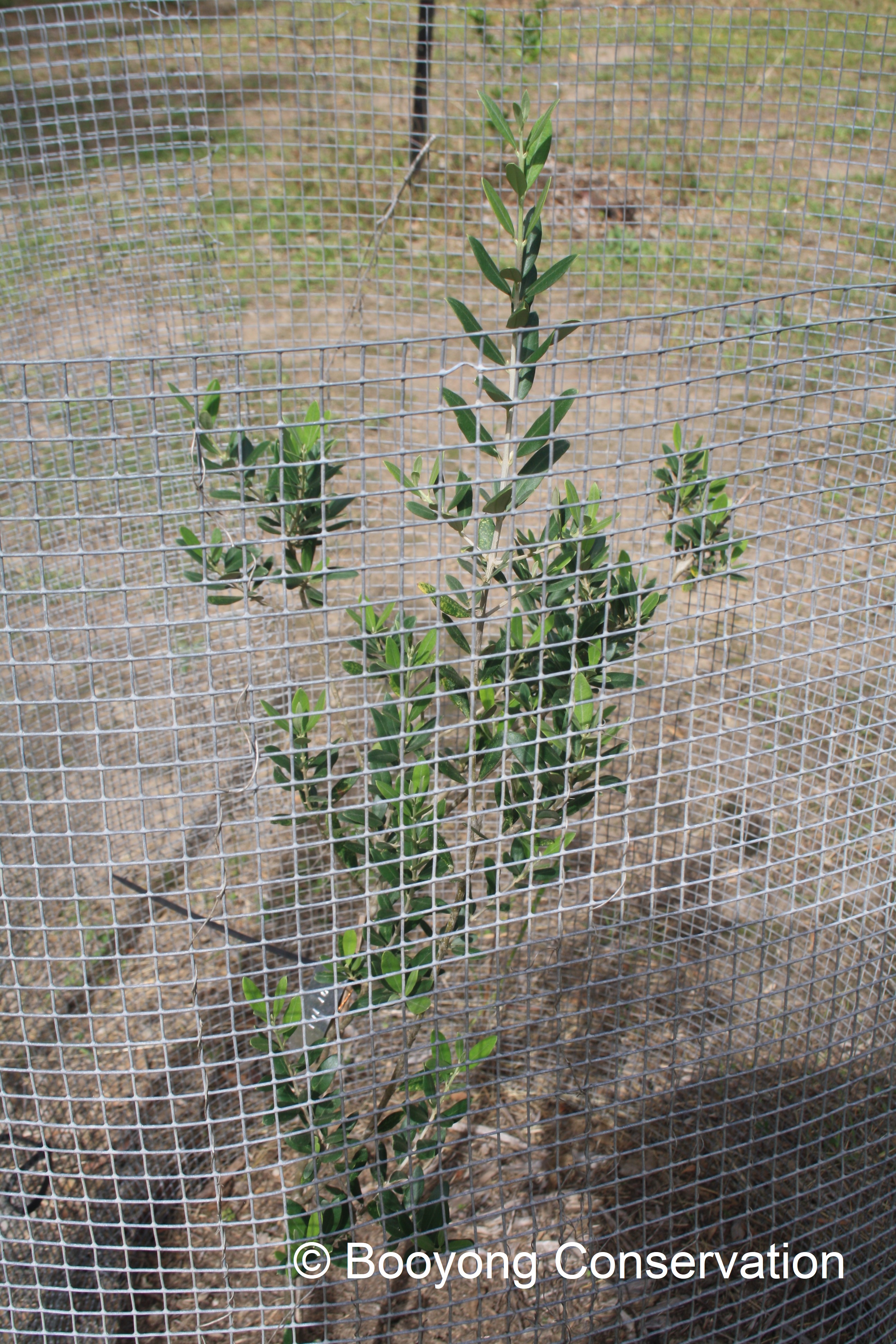One of the first fruit trees we planted in the Food Forest at Booyong was the Kalamata Olive. This tree is an evergreen tree with small white fragrant flowers in the spring which produce a lot of pollen. We were devastated when the kangaroos devoured the young leaves of the tree overnight and have since surrounded the tree with mesh to protect it. While we wait for the first fruits in approximately three years (2020) we will savour and enjoy the stunning silver foliage of the olive tree.
Growing – A tough and drought self-pollinating hardy plant that thrives in a Mediterranean climate with long hot, dry summers and a cool winter. Olive trees will tolerate a large range of soil conditions, preferring a neutral to alkaline soil type. It likes full and direct sunlight and can grow to 8m. The cool winter allows them to rest so they can prepare for their main shotting, flowering and fruiting in Spring. We can expect a long lifespan and the provision of fruit for over a hundred years.
Care – Fortunately for us, these trees can survive on poor, low-nutrient soils, providing they are well-drained. Well-rotted manure should be added to the soil to add micronutrients and miro-organisms. Blue-metal (basalt rock) crusher dust should also be spread over the top and lime added to bring its pH level to 7.0-8.0 (neutral to alkaline). Mulch should then be placed over the top and as it decomposes, the nutrients will be transferred into the soil by earthworms, rain and micro-organisms. Avoid letting the mulch touch the trunk to avoid collar rot and don’t let weeds grow around the base of the tree as they compete for water and nutrients.
When planting a new tree, don’t tease the roots out, as this will stress the tree by damaging the young brittle roots. The staking of young olive trees is very important and when watering use under tree sprinkler watering to help the roots spread widely to create a stable tree.
Don’t over water, however, ensure Winter watering occurs to keep the trees healthy for a good spring flowering and a good fruit set. Fertiliser in early spring and late summer with a well-balanced fertiliser, such as Yates Dynamic Lifter Advanced for Fruit & Citrus or Osmocote Plus Organics Fruit & Citrus, which feeds the plant and enriches the soil, too.
Pruning – Olive trees need enough light and air through their foliage to bear good crops and reduce pest and fungal issues so remove any branches that cross over in the middle of the tree. Also remove any low branches, suckers or dead wood. This can be done after harvest in Autumn.
Companion Planting – Unknown
Pests and Diseases – Olive tree diseases are relatively minimal in Australia. The main fungal problem is known as Peacock Spot (Cycloconium oleaginum) and can be treated with copper fungicides. Olives can also be affected by Phytophthora which is encouraged by excessive soil moisture and a lack of oxygen around the roots. Insect Pests are restricted to the brown olive scale and olive lace bug which are a native Australian critter that suck sap from the underside of the leaves – if seen, thoroughly spray the underside of the leaves with a product such as Eco-oil or pyrethrum.
Harvest – Once the tree is four or five years old, it will start to bear fruit. Kalamata’ produces juicy, sweet olives that are harvested once they turn black between February and June each year. The fruit can be handpicked or raked out of the trees by using a garden type rake with close prongs. Spread a sheet or tarpaulin on the ground underneath the tree, then shake the tree vigorously to free the fruit.
Propagation – Olive trees propagate reliably in several ways, although cuttings and seeds are the simplest means of growing new trees at home. Both methods will yield a transplantable tree within one year; however, cutting-propagated olive trees will mature faster and more closely resemble the parent tree in terms of size, growth habit and fruit.
Health Benefits – According to recent Health Recent studies olives and olive oil help to lower levels of bad cholesterol and reduce the risk of heart attacks and certain cancers.
Eating – Olives can be Picked or Pickled and are great for cooking or eating on their own. Green and black olive paste can be used as a spread on bread or for adding to salad dressings and Olive dips are also lovely.
